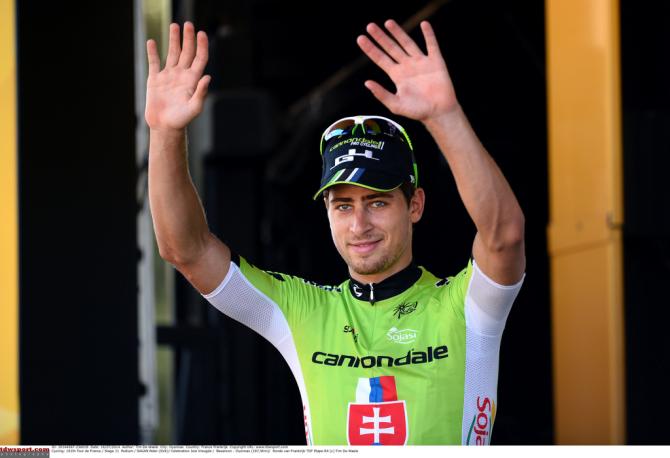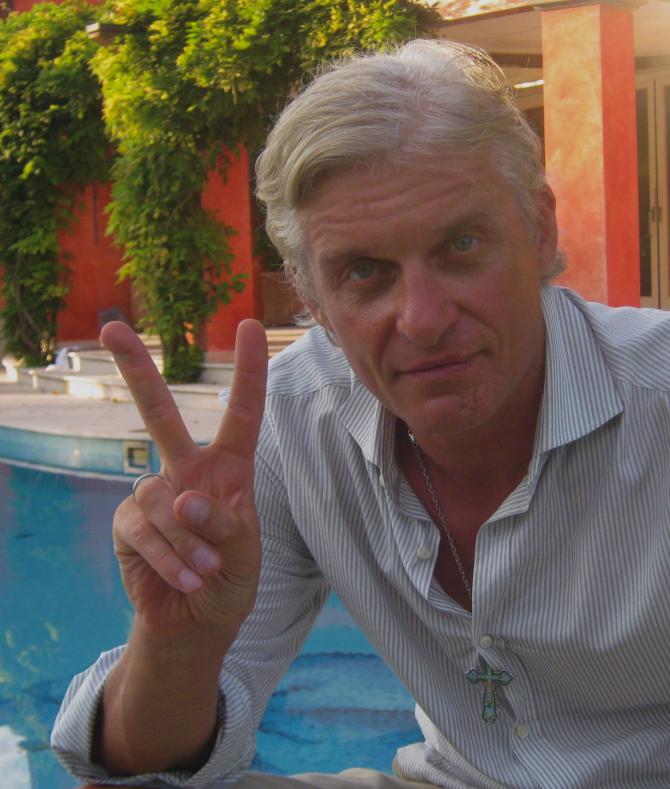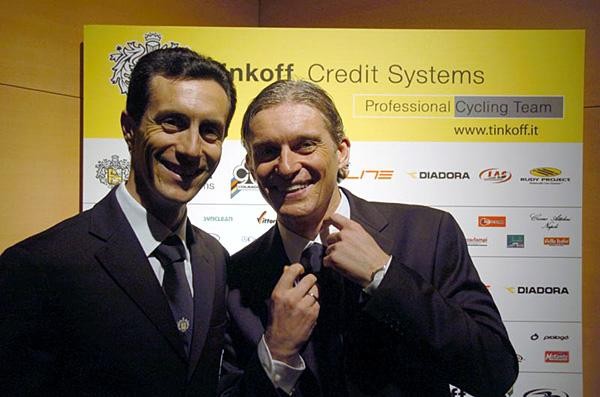Sagan's Tinkoff-Saxo transfer was over a year in the making
Team CEO Feltrin explains background to the deal of the summer



Finally, Oleg Tinkov has his man. Following a courtship that has lasted off and on for over a year, Peter Sagan was confirmed as a Tinkoff-Saxo rider on Friday morning, having put pen to paper on a three-year deal with the squad.
Speaking to Cyclingnews shortly after the official announcement, Tinkoff-Saxo CEO Stefano Feltrin revealed that his first talks with Sagan’s agent Giovanni Lombardi dated back to July of last year, when Tinkov was exploring the possibility of taking control of the Slovak’s Cannondale team. Having agreed at that point to part company with Bjarne Riis and Saxo, Tinkov was keen to create his own team and identified Sagan as the rider he wanted to build around.
“I started talking to Sagan in July of last year when we were negotiating with Cannondale, so even at that point, Sagan was in our plans,” Feltrin said. “I had meetings with Lombardi before the potential deal with Cannondale collapsed.”
When those Cannondale negotiations stalled last autumn – Tinkov wanted to be team owner, rather than simply a sponsor – the Russian went back to Riis and purchased the team from him. Sagan, meanwhile, would remain with Cannondale for another year, but almost immediately, the rebranded Tinkoff-Saxo began making enquiries about his availability for 2015.
They were not the only team in the hunt, of course. When Fernando Alonso took Sagan for a test drive around the Ferrari circuit in Maranello after last year’s world championships, speculation was rife that he would be the centrepiece of the Formula 1 driver’s purported new team. Deep into the spring, meanwhile, Cannondale manager Roberto Amadio looked to sound an optimistic note about persuading Sagan to sign a new contract.
“You’d need to ask Lombardi how many other offers he had. There certainly would have been Alonso and Cannondale, but every team was interested in signing Sagan,” Feltrin said.
From May onwards, however, it seemed increasingly inevitable that Sagan would sign for Tinkoff-Saxo, and Paolo Bettini’s renewed efforts to get the Alonso project off the ground in recent weeks did little to change that perception. Diplomatically, Feltrin would not be drawn on when Tinkoff-Saxo reached its final agreement with Sagan.
Get The Leadout Newsletter
The latest race content, interviews, features, reviews and expert buying guides, direct to your inbox!
"Let's just say that on August 1 [the official beginning of cycling’s transfer window - ed.], we were calm," Feltrin said. “We were able to offer him a multi-year working project, it wasn’t just an economic project, but a sporting one, which offered him the chance to grow."
There has been plenty of conjecture as to the wage offered to Sagan, and the estimated figure has seemed to grow over time, with figures of up to €4 million per year bandied about in some quarters.
“Obviously the figure is secret, but we’re both happy with the contract,” Feltrin said. “I always say that contracts are only good if both parties are equally happy or equally unhappy. And we’re both happy.”
Although Tinkov’s backing means that Tinkoff-Saxo’s economic might is significant, Feltrin was careful to point out that the team’s budget is not limitless. It seems that agreements with sponsors and suppliers have helped to structure the Sagan deal, given a commercial appeal that extends beyond his achievements on the road.
“We’ve got a commercial mentality. We create a budget and then we respect it – we can’t spend infinitely,” Feltrin said. “Market value is a variable thing. If Peter wins, it’s money well-spent. If he doesn’t, maybe it’s not, but then again, Peter Sagan has a value that goes beyond his sporting value. It’s like what we’re seeing with Rafal Majka in Poland. He’s like super man there, and that has a huge commercial value for the team and sponsors.”
Fitting in with Contador - and another major Classics signing?
Economically speaking, Sagan fits within Tinkoff-Saxo’s budget, but how will his arrival affect the eco-system of a team that has been built around Alberto Contador for the past four years? In particular, chasing both the yellow and green jerseys at the Tour de France is increasingly difficult in the contemporary era, as Mark Cavendish’s year at Sky in 2012 demonstrated.
“It’s not a problem, it’s an opportunity – for both of them,” said Feltrin. “Sagan doesn’t need half a team to help him at the Tour, and besides, our team can help both of them. They’ll be riding on the front in any case to keep Alberto out of trouble. Then Peter is so strong in so many other areas – in the time trial and in the medium mountains – that he can help Alberto too.”
The true barometer of Sagan’s progress in 2015 will come in the spring classics, of course. The 24-year-old has won Gent-Wevelgem and E3 Harelbeke in the past two years but has yet to land victory in a monument, be it through tactical shortcomings or a lack of team support. Both issues should be addressed at Tinkoff-Saxo, and their classics unit is set to be bolstered still further by another important and still-to-be-announced signing.
“We already have a very strong team for the classics, with [Matteo] Tosatto, [Daniele] Bennati and [Matti] Breschel, we just had a lot of bad luck with in the northern campaign this year,” Feltrin said. “We’ve signed Pavel Brutt, who did enormous work at Milan-San Remo this year, we’ll confirm the arrivals of Juraj Sagan and Maciej Bodnar soon, and we’re going to sign another rider for the classics.”
At Tinkoff-Saxo, Sagan will also come under the tutelage of team manager Bjarne Riis, who was so instrumental in moulding Fabian Cancellara into a classics rider. Feltrin described the Dane’s role in the negotiations as “fundamental.”
“The very fact that Bjarne is the team manager at Tinkoff-Saxo was essential in attracting Peter to come here,” Feltrin said.
“Our philosophy is to build a team, not just to fill a roster with champions. And we showed that at the Tour, where we built a team around Alberto, and then we were able to respond as a team when he had to abandon. It will be a similar approach with Sagan.”

Barry Ryan was Head of Features at Cyclingnews. He has covered professional cycling since 2010, reporting from the Tour de France, Giro d’Italia and events from Argentina to Japan. His writing has appeared in The Independent, Procycling and Cycling Plus. He is the author of The Ascent: Sean Kelly, Stephen Roche and the Rise of Irish Cycling’s Golden Generation, published by Gill Books.